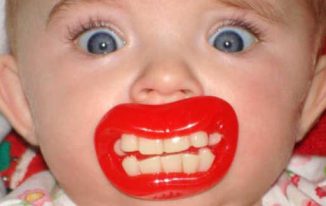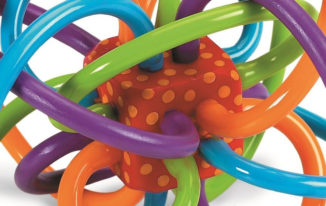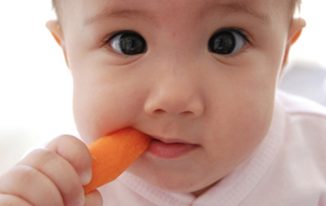Is your baby over drooling? Does your baby keep touching his or her gums? Is your baby getting more irritable than normal?
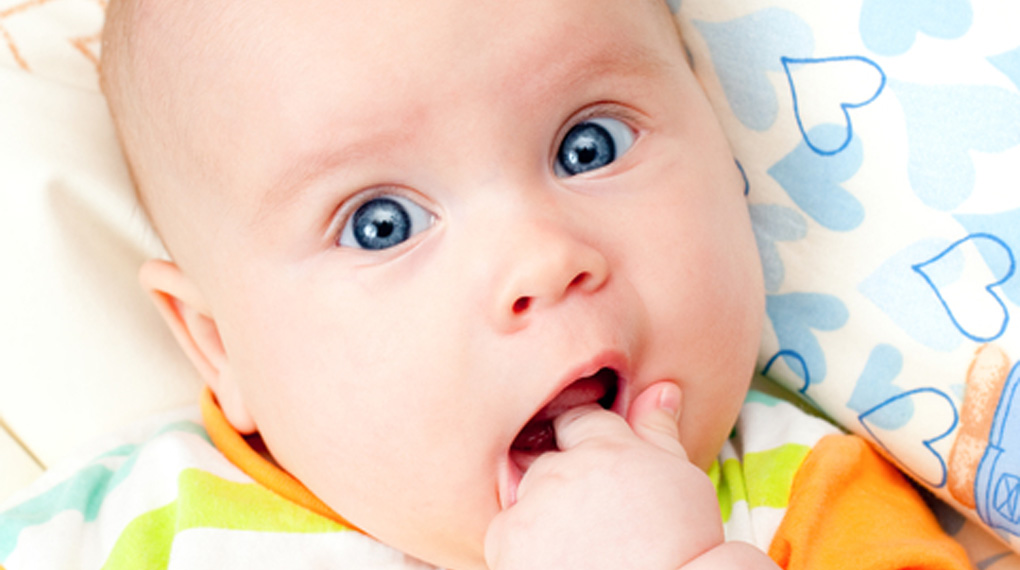
Every baby experiences teething differently from the time their first set of teeth emerges to the types of symptoms they may have.
So when does teething usually start? It really varies from one child to another.
However, according to WebMD.com (1):
“Teething usually begins around 6 months of age. But it is normal for teething to start at any time between 3 months and 12 months of age. By the time your child is about 3 years old, he or she will have all 20 primary teeth.”
When it comes to symptoms, expect your baby to have various teething symptoms.
According to pediatrician Deb Lonzer (2), chairperson of the Department of Community Pediatrics at Cleveland Clinic Children’s Hospital:
“No more than a third of babies have any one symptom … one-third of the kids might drool, another third might be irritable, and another third might have trouble sleeping.”
Although the teething stage could be a very difficult time for your baby, you could help ease the pain. By being aware of the teething signs, you’d know how you could comfort your little one.
Here are the 10 teething signs that you should look out for with your baby.
10. Biting and gnawing.
A teething baby will gnaw and gum-down on anything. The counter pressure from biting helps relieve the pressure from under the gums and temporarily numbs the pain. (3)
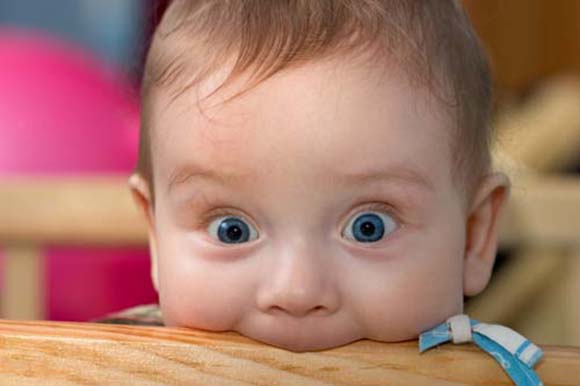
To help relieve and ease the discomfort that your baby may be experiencing, your baby may be gnawing on anything and everything that he/she can get his/her hands on.
Be it toys, the edge of the table, or the rail of the crib, everything is fair game to your baby. Teething rings can really come in very handy for your baby.
Here is another classic tell-tale sign that your baby may be teething. Get those colorful, handy bibs ready as your baby will be doing some …
9. Heavy drooling.
The byproduct of a baby’s saliva production, drooling begins when a child is about 3 months old and lasts until he’s between 12 and 15 months old – more or less the same time period as teething. Drooling is a classic symptom of your baby’s teeth gradually pushing toward the gum’s surface, a process that can start months before the first tooth’s eruption. (4)
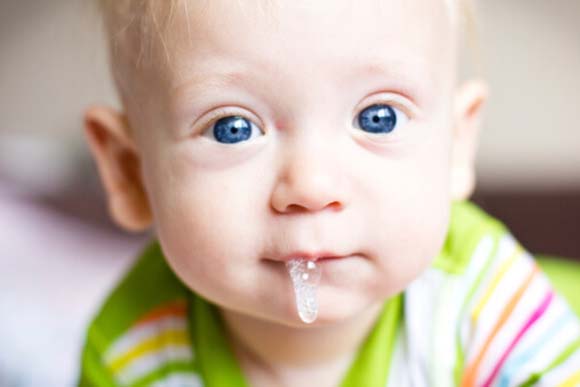
When your baby is teething, drooling is a common occurrence as the body creates extra saliva to lubricate the tender gums. Drooling may also be worse with some babies than others.
It’s definitely a good time to have bibs handy during your baby’s drooling stage.
Expect your baby to be putting their hands in the mouth quite often.
8. Gum-rubbing or finger-chewing.
Chewing helps to relieve the pain and pressure of teething, so you may notice your baby trying to soothe herself by chewing on her fingers. Try to keep your baby’s hands clean so that she doesn’t swallow any germs. (5)
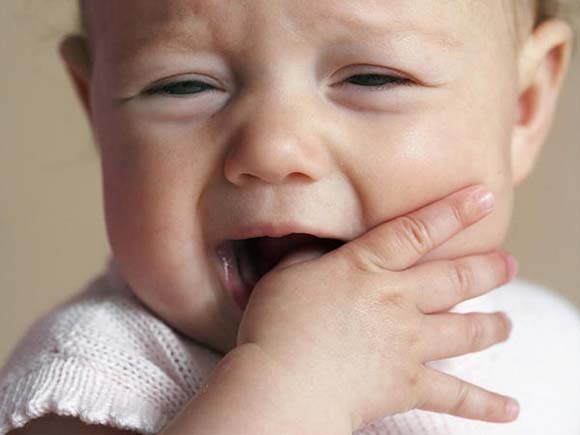
During teething, your baby’s gums become tender and sore. As a result, your baby will have the tendency to touch their gums with their fingers to soother them.
Some parents suggest using your clean finger or a cold teething ring to rub your baby’s gums for about a minute or two to help soothe the discomfort.
Aside from placing their hands and fingers in their mouth, your baby might also be doing this next symptom. It’s not just his/her gums that your baby will be touching …
7. Cheek-rubbing and ear-pulling.
Pain in the gums may spread to the ears and cheeks, particularly when the back molars begin coming in. This is why you may see your baby rubbing his cheeks or pulling at his ears. (6)
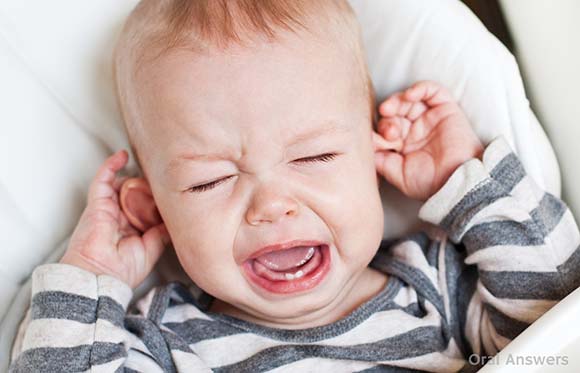
Experts think that babies do this to create counter pressure that eases of the discomfort and pain that they may be experiencing.
It’s more of an instinctive massage reaction to ease the discomfort.
Because of the heavy drooling, expect to see some skin irritation while your baby is teething.
6. Chin or facial rash.
If your baby is a heavy drooler, the constant contact with saliva may cause the skin around the chin and mouth to become irritated. Gently wipe your baby’s mouth and chin periodically throughout the day to help prevent chapped skin and rashes. (7)

The folks at WhatToExpect.com (8) suggest the following remedy:
“Patting away the drool will help prevent the rash. You can also create a moisture barrier with Vaseline or Aquaphor, and moisturize with a gentle unscented skin cream as needed. Have some nipple cream (like Lansinoh) on hand? It’s great for protecting tender baby skin, too.”
Because of the discomfort as a result of teething, mood swings may be quite an occurrence. Be a little patient as your baby may be showing a little bit of crankiness and grumpiness.
Don’t be surprised if your baby shows signs of …
5. Irritability and fussiness.
Your baby’s mouth will ache as that little tooth presses on the gums and pokes up to the surface, and, not surprisingly, it’ll probably make her feel out of sorts. Some babies may be irritable for just a few hours, but others can stay crabby for days or even weeks. (9)
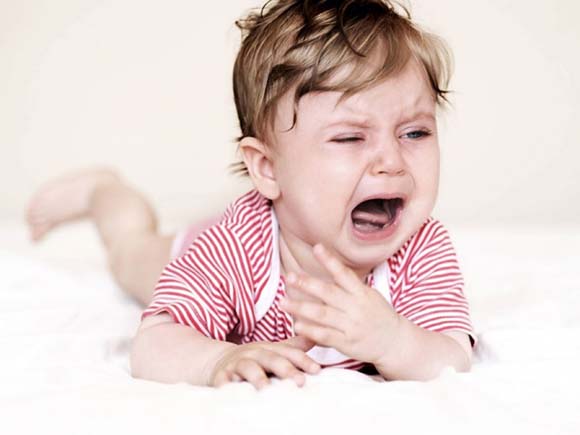
As baby teeth starts to come out of the gums, your baby’s gums may become increasingly sore and uncomfortable. Hence, this may lead to fussiness and crying.
Just do your best to comfort them and give them some extra loving care.
If a baby’s gums are causing some (or a lot of) discomfort, don’t be surprised with this …
4. Decreased appetite or refusal to feed.
Uncomfortable, cranky babies yearn to be soothed by something in their mouths — whether a bottle or the breast. But the suction of nursing may make a teething baby’s sore gums feel worse. For that reason, teething babies are fussy about feedings (and get more frustrated as neither their discomfort nor their hungry tummies find relief). Babies eating solid foods may also refuse to eat during teething. (10)
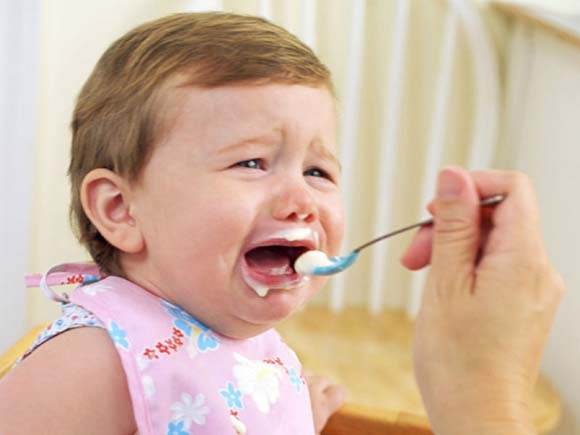
Try to keep feeding your baby during regular meal times. If your baby appears hungry in-between meals, you can offer him/her something too just so your baby gets nourishment.
Now if your baby still keeps refusing to eat, call your pediatrician.
A lot of parents have observed this next symptom while studies have shown mixed results regarding this particular symptom. Just keep a close watch on your baby when he or she has a stuffy nose.
3. Cold-like symptoms.
Some experts believe teething can cause a slight runny nose and a minimal cough, but others say these symptoms are more likely due to the common cold. All agree that serious coughing and congestion signal a bona fide illness — and are not the result of teething. (11)
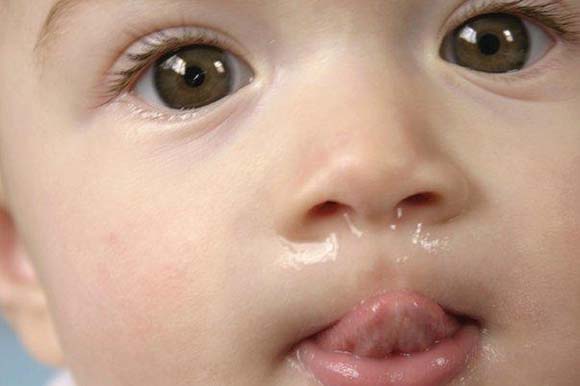
Some experts think that cold-like symptoms in teething babies may be a result of a baby’s attempt to alleviate pain by frequently putting their hands in their mouth or start chewing on their toys. These then exposes the baby to more germs, which results in colds.
Just make sure to notify and consult with your doctor if symptoms occur for more than two days.
Is your baby no longer sleeping like an angel? If yes, then your baby may be teething if he or she has been exhibiting these lately …
2. Wakefulness or not sleeping well.
Tooth eruption — when the tooth moves through the bone and gum — tends to come in stages, with more activity at night than during the day, so your baby may be more irritable then. (12)
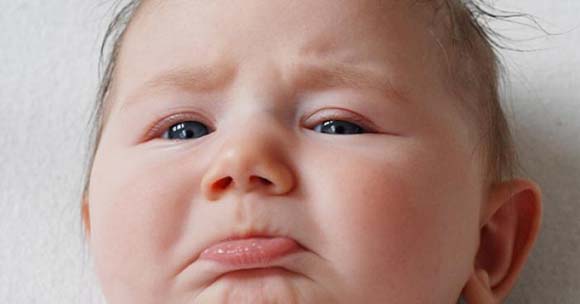
When your baby is teething, you might observe that he/she may be waking up more often during the night. Some parents have also observed that babies tend to wake up more often when their molars start coming out. You may also find that your baby will tend to nap less and wake up earlier in the morning.
Lastly, the jury is still out on this next symptom.
There remains some conflicting evidence on whether low-grade fever can be significantly associated with teething.
1. Low-grade fever.
This is another sign doctors are sometimes hesitant to directly link with teething. Many parents, however, find their babies get low-grade fevers while teething. Notify your doctor if the temperature rises above 102 degrees F, or if the temperature remains elevated for more than two days. (13)
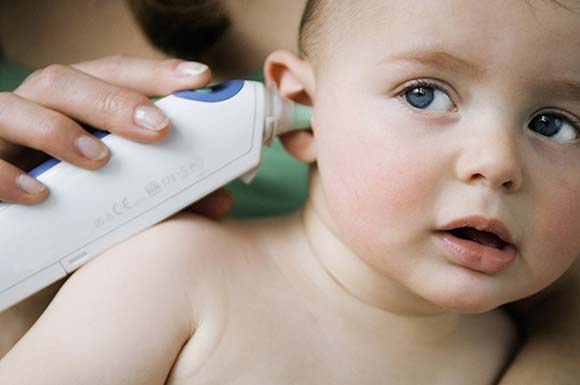
According to a study on the American Academy of Pediatrics mild temperature elevation is statistically associated with teething (14). However, another study (15) on its site finds that fever is not a normal teething symptom.
As a precaution, if your baby’s temperature remains elevated for more than two days, consult your pediatrician. Kevin Hale (16), a spokesperson for the American Academy of Pediatric Dentistry says:
“Don’t assume that a fever is caused by teething, because there could be other things going on.”
What about diarrhea?
Although a lot of people think diarrhea is related to teething, there appears to be no scientific and statistical evidence (17) to support this. Some people think that the most likely cause of diarrhea during teething is extra saliva swallowed, which then loosens the stool. However, a more likely explanation is as follows:
“… during teething, the child begins to chew on any object or toy lying around. They even suck their fingers, thumbs and hands due to gum irritation. As the immunity levels are low, bacteria and viruses present on the surface of these objects get an entry directly into the body from the mouth. The body cannot fight off the bacteria or viruses and the result is a gastrointestinal upset, that is, diarrhea.” (18)
Please take note: In the event that your little one has a fever or a runny nose, do not simply dismiss these as signs of teething, especially if the symptoms last longer than 24 hours. Call or visit your baby’s pediatrician to rule out anything more serious.
It also helps to know more about your family’s teething history. If you had teethed early, your little one is most likely to follow suit as well. Keeping in mind your family’s dental history can help you anticipate the teething phase of your baby.
Teething is milestone in your baby’s life. However, it can make your baby very uncomfortable. There will be a lot of crying but you’ll survive it. Once you are able to identify the signs of teething, you can easily calm your baby down.
The symptoms of teething list presented were compiled based on a study presented on Pediatrics (19), which is the Official Journal of the American Academy of Pediatrics.
WebMD (20) recommends the following tips to help your baby feel better while teething:
– Use a clean finger (or cold teething ring) to gently rub your baby’s gum for about 2 minutes at a time. Many babies find this soothing, although they may protest at first.
– Provide safe objects for your baby to chew on, such as teething rings.
– If needed, give your baby an over-the-counter pain reliever that is labeled for his or her specific age. Read and follow all instructions. Do not give aspirin to anyone younger than 20, because it has been linked to Reye syndrome, a rare but serious disease.
Let’s help babies who are teething. Please share this with family and friends whose baby may be going through this very uncomfortable stage.
Can you think of other signs that a baby is teething already?


